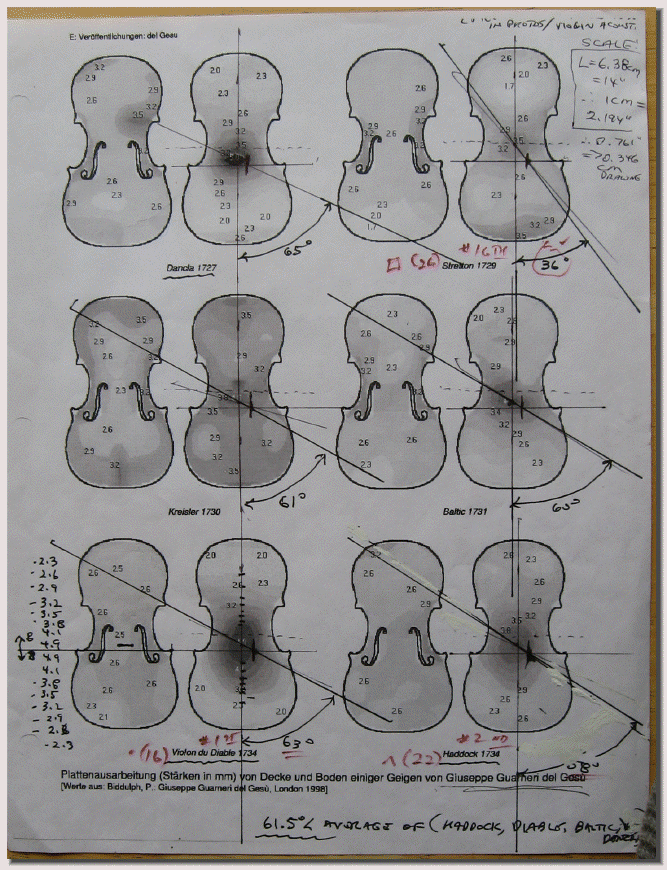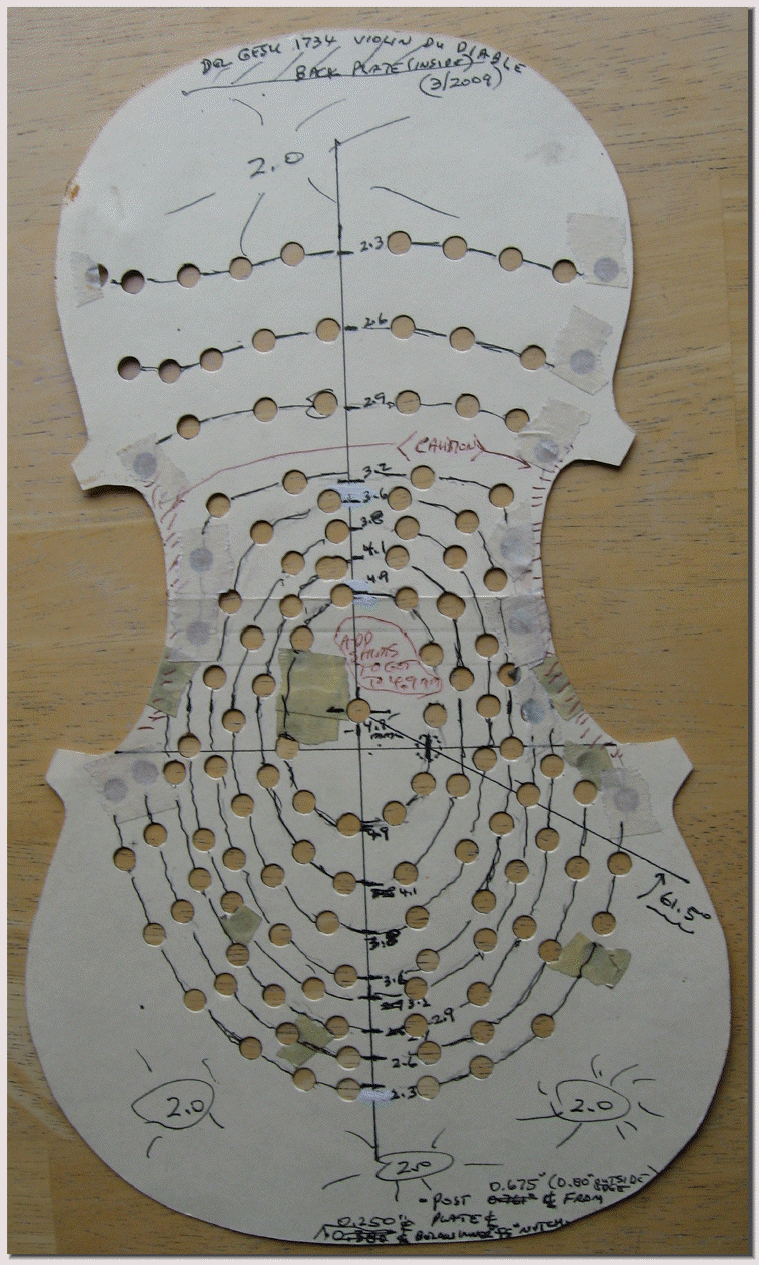{Modified 8/2014}
Page AA_39
..In a major (rare and expensive) book on Geiseppe Guarneri del Gesu, ( by P. Biddulph) there is this page showing violin plate graduation patterns of some of his most famous violins:

..I have carefully analyzed these patterns paying special attention to similarities that might prove helpful to violin making, using his techniques.
.. What became apparent is that the center of the thickest part of the back plate graduation plan is in the same place relative to the sound post, in five of the six featured violins.
..To use this information: locate and mark the exact center location of the sound post for your violin. Next, draw a line down the center of the back plate (on the inside surface which is now flat), and then draw a line at an angle of 61.5 degrees to the center line beginning at the sound post center spot mark. Where these two lines cross will be the center of the thickest area. It will remain the center of the thickest area even after final adjustments. In other words; around this point all the graduation areas are centered.
..This results in the following initial graduation pattern for the back plate wood:

..The measurements are in mm. (One mm = 0.0394"). It is understood that the measurements go only to the outline of the glue liner strips and that the ends are square across from the inside edges of the end blocks (as shown in the page on laying out the graduation of the top plate).
..The punched holes are where I make a mark on the wood surface and then connect those marks with straight lines and the mm thicknesses prior to drilling and painting during the graduation procedure. I set my drill press to a certain depth and then drill all the holes that depth; change to another dimension ... and so on. The 2mm area at each end are drilled all over to allow careful even graduation.
...On finishing the plates the wood is evenly tapered from one thicknessed area to the next so that there are no ridges in graduation, just smooth transitions.


..When the plate is graduated, determine the tap tones at both the upper and lower bout and record this information. The special tap points are found by watching this instructional youtube video I have produced for you:
..Try for a final tap tone adjustment of 198 HZ all over for the back plate. For instructions on how to move the tap tone up or down see:
...Now to make the tap tone even all over the vibrating surfaces of each plate (the graduated wood areas), I suggest you use my modified Vigdorchik method of tuning each individual tone strip until the entire plate is even. See separate articles and videos on this method.





